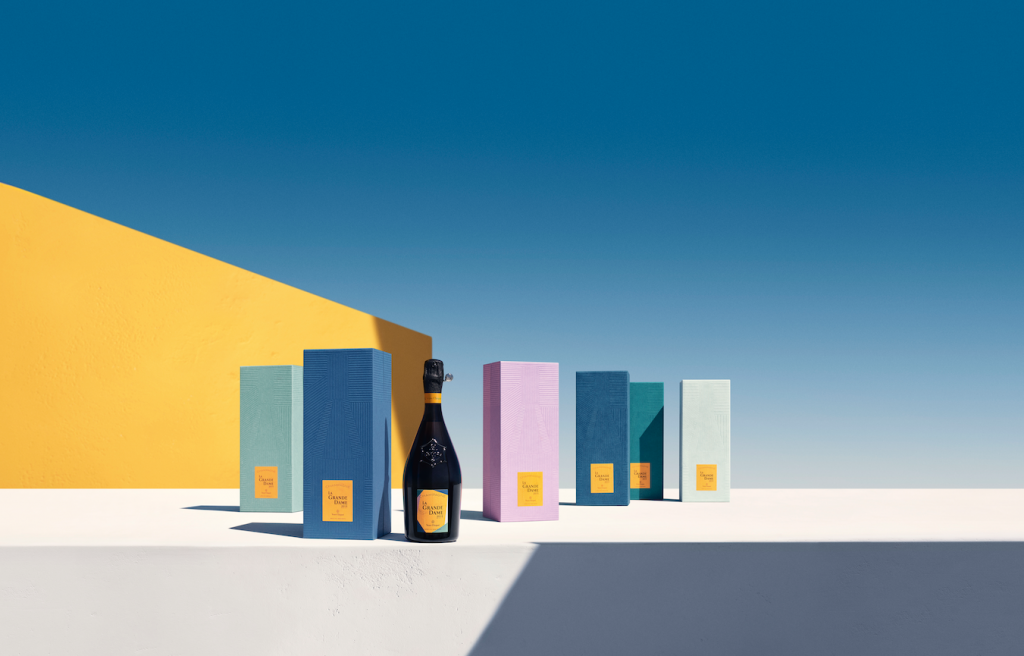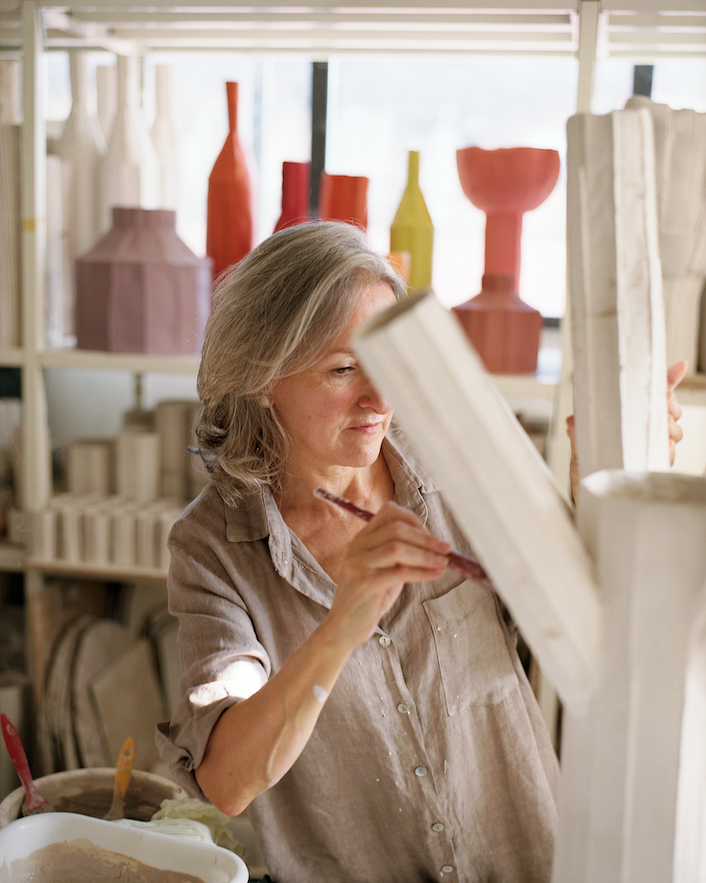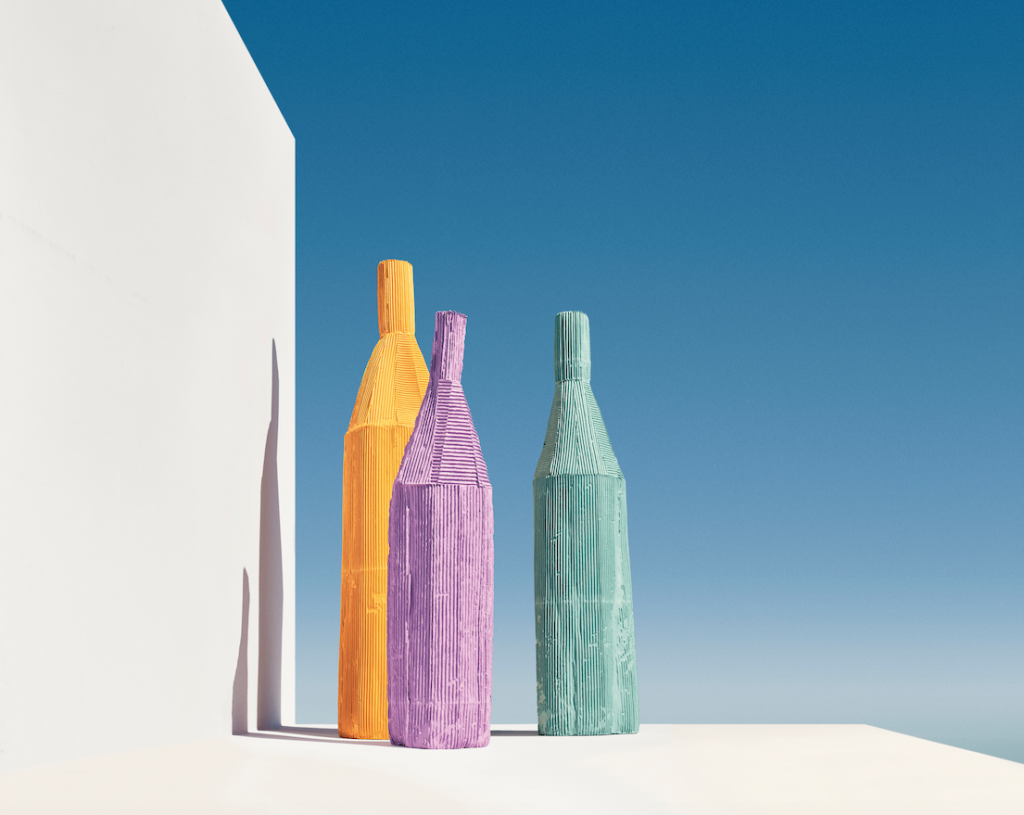#art & design
Paola Paronetto draws on Veuve Clicquot’s trailblazing leader for inspiration
July 27, 2023
They may be worlds apart – centuries, even – but Paola Paronetto is, like Madame Clicquot Ponsardin, a trailblazer. She takes Stephenie Gee through her vibrant creations for Veuve Clicquot’s new 2015 vintage of La Grande Dame

When the 27-year-old Madame Clicquot Ponsardin tasked herself with taking the reins of her husband’s champagne house upon his untimely death in 1805 – a time in which women in leadership roles was practically unheard of – her only desire was to succeed. And succeed she did. From innovating production techniques and inventing a new, more elegant bottle shape to producing the first-ever vintage and first-ever rosé champagne made by adding still red wine to its sparkling, Madame Clicquot had, by the time of her passing in 1866, established Veuve Clicquot as a byword for luxury and excellence in the world of fine wines and champagnes, and herself as a legend in her own lifetime with an enduring legacy as the “Grande Dame of Champagne”.
It seems only right, then, that Veuve Clicquot would go on to name its first prestige cuvée in her honour. This was in the year 1972, on the bicentenary of the house. Fast-forward 51 years and the cuvée La Grande Dame stands as the signature and showcase for Maison Veuve Clicquot’s winemaking excellence and its savoir- faire, with the past decade seeing a series of collaborations with pioneering creatives to champion the message behind it.
For the launch of La Grande Dame 2012 in 2020, Veuve Clicquot tapped renowned Japanese artist Yayoi Kusama to interpret the bottle and case with her distinctive polka dots and flower motifs. This year marks both the 250th anniversary of the champagne house and release of its La Grande Dame 2015 vintage, so the brand set off into the hills of Italy’s Friuli-Venezia Giulia to enlist the help of famed ceramicist Paola Paronetto, who imagined six gift boxes crafted from paper clay in her favourite hues from her own palette of 86 nuances.
What drew you to this collaboration?
First and foremost, I was moved by the intention of the collaboration. Veuve Clicquot’s objectives aligned so well with my own and the connections I saw between the work of Madame Clicquot and my own made this a very special collaboration for me. Of course, having the possibility to work with the historic maison and experience their dedication and excellence first-hand has been wonderful.
What are some of the parallels between values of Veuve Clicquot and yourself?
Their optimism through colours, specifically their iconic yellow is inspiring. Their love and respect of nature and the land that gives us life is very much key for me and as such we are on the same page. Supporting women in the workplace and embracing and encouraging female innovation is something we both feel is essential. I could go on and on. The connections are so many.

What is this innovative “paper clay” technique that you employ in your work?
In short, paper pulp fibres are added to the clay to make it more fluid and malleable. The paper clay technique is well known, however, few have mastered it because of its complex processes and problematic results. For me it was a means to an end since I wanted to create more bold and free-form ceramics and this technique enabled me to do so. I’m proud to say that, through many years of trial and error, I’ve been able to master the technique.
What was the creative process like?
We began with the coffret and this turned out to one of the more challenging aspects of the design process. We wanted to make boxes that were 100% eco- sustainable, which meant no plastic or metal. Of course, they had to be robust and safe for the bottle so this was quite a challenge. I then worked on an ice bucket for the maison, which is a table object for “use” which once again was challenging since my sculptures are usually just decorative.
Another interesting aspect of the collaboration was to create the Giganti bottle sculptures in ceramic in honour of La Grande Dame. I felt that we had to do something that reflected the magnificence of Madame Clicquot while also thinking about the verticality of the 2015 cuvée. The tallest piece is 135cm, which in ceramic is quite something to behold. Finally, to give the highest honour I could to Madame Clicquot I wanted to go even taller. It wasn’t possible in ceramic so we made Giganti bottles in metal, the tallest being 6m and the smallest 4m, which were displayed at the various launches.
Also see: Jaffa Lam on art in Hong Kong
Was there a reason why you chose the six colours you did for the boxes?
You will see from my work that my art is compositional. I love to see my ceramics in groups that dialogue well together since they represent the togetherness in humanity and nature. This meant that to have just one colour was too limiting and not a true reflection of my work. For this reason, I wanted six different colours that create an integral harmony and are emotive when seen as a group. The colours chosen are also individual protagonists and when seen alone still evoke optimism and positivity.
Madame Clicquot and La Grande Dame are known as carriers of hope and optimism – how did you translate this into the work?
Firstly, with colour. The colours chosen were a reflection of the colours found in nature – the blues of the sky, the greens that make up the major part of the natural world and a hint of lavender for the feminine touch. These colours are matte and absorb the light instead of reflecting it, which means that the effect of the colours to the eye has more impact. The coffret also features my Cartoccio texture, which makes the experience tactile as well as visive.

You also created three limited-edition sculptures named Giganti.
The Giganti bottles are a group of three ceramics – 135cm, 115cm and 100cm – which represent the three sizes of the champagne bottles – the classic 75cl, magnum and jeroboam. Seeing these Giganti sculptures together with their bold colours, especially the yellow of the maison, and their verticality is very moving. I hope that the magnitude of Madame Clicquot and the optimism of the maison is transmitted though these pieces.
How would you describe your relationship with Veuve Clicquot – are you a fan?
Absolutely. I didn’t know much about Madame Clicquot and Veuve Clicquot as a brand before the collaboration, apart from the obvious: excellence in champagne making. After finding out about the deep and moving history behind the name, I will forever be a fan.
Also see: Belmond and Galleria Continua revitalise historical sites with art























































